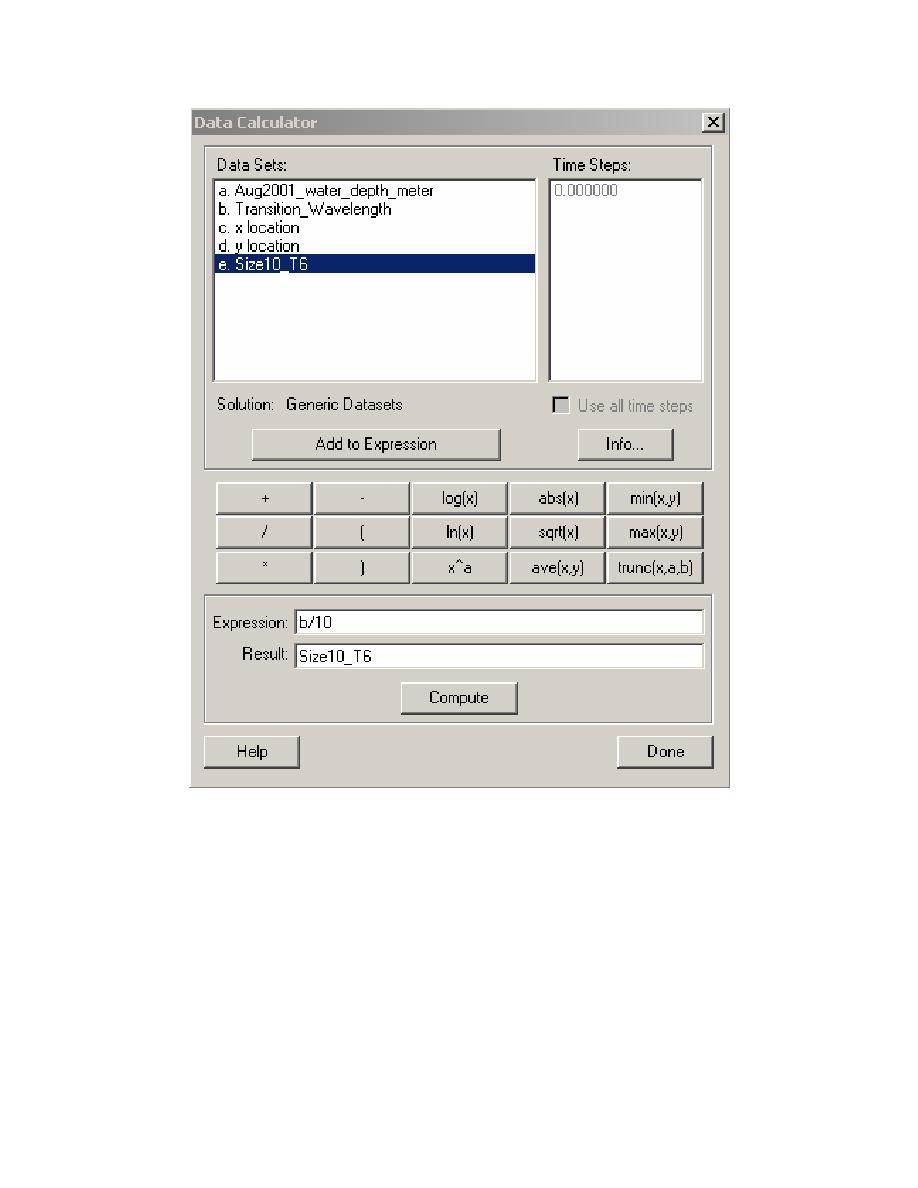
ERDC/CHL CHETN-I-68
March 2004
Figure 7.
Create size function using data calculator
Reflection Coefficients. The third step is to assign the reflection coefficients. Values range from
0.0 for no reflection (i.e., complete transmission) to 1.0 for complete reflection. Typical reflection
coefficients for marshy shorelines and rubble-mound breakwaters are 0.1 and 0.5, respectively. The
public piers at Tedious Creek were constructed using vertical sheet-pile walls that did not extend to
the bottom. The appropriate reflection coefficient of 0.9 was assigned for them. In the Map module,
activate the Select Feature Arc Tool and double click on each arc to set the appropriate reflection
coefficient. This process is illustrated in Figure 9. Thompson et al. (1996) provides a good reference
for typical reflection coefficients for short waves.
11


 Previous Page
Previous Page
